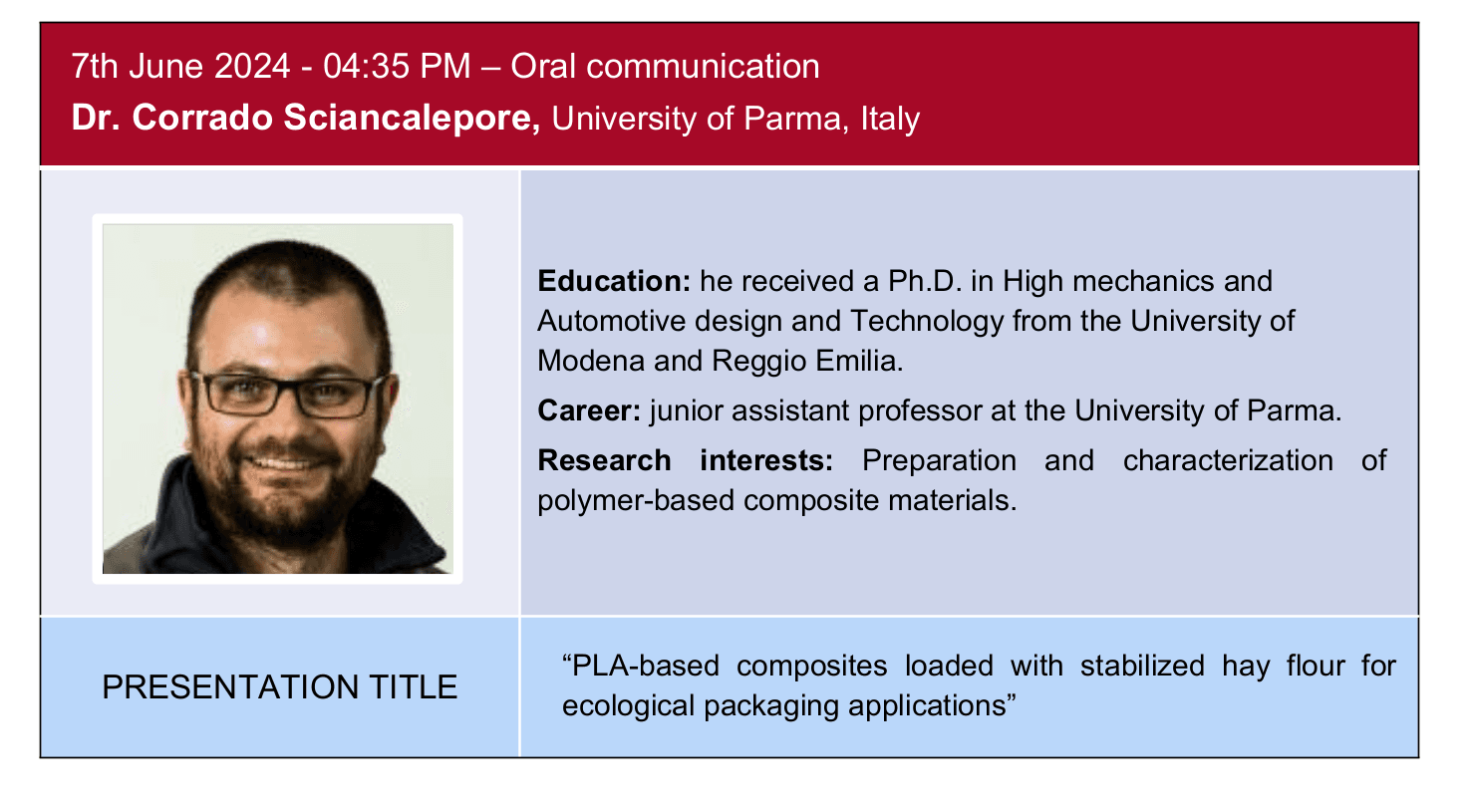PLA-based composites loaded with stabilized hay flour for ecological packaging applications<
Corrado Sciancalepore, Duccio Gallichi-Nottiani, Francesco Musiari, Maria Grimaldi, Daniel Milanese

Poly(lactic acid) (PLA) is a common biopolymer, used in the food packaging sector, both for rigid containers and flexible films. Despite the interesting properties of this biopolymer, its usage is still limited by its reduced barrier properties and higher costs in comparison with conventional polymers already used for food packaging [1]. The present work aims to investigate new solutions like biocomposites in which different amounts of the biopolymer were replaced by lignocellulosic microparticles obtained from hay flour (HF), a common agro-industrial byproduct [2]. The lignocellulosic filler was sieved and stabilized with a thermal treatment at 180 °C in vacuum (p<0,01 bar). The biopolymer and the filler were then mixed in different amounts, adding different concentrations of glycerol triacetate (GT), a commercial plasticizer, to limit the stiffening of the composite material associated with the presence of rigid lignocellulosic microparticles. Compositions with 20 and 30 wt.% HF were prepared adding between 0 and 12.5 wt.% GT, with the amount of polymer comprised between 57.5 and 80%. Overall, 11 compositions were prepared: a pure PLA, used as a benchmark, and 10 combinations of PLA/HF/GT to obtain pellets with homogenous compositions. The composite materials were processed with a single-screw extruder. Then, using injection molding, dumbbell specimens were produced for tensile testing, according to ISO 527-2:2012. The materials were also characterized in terms of thermo-mechanical properties, using Dynamo-mechanical analysis (DMA), Fourier- transformed Infrared (FTIR) spectroscopy, and Scanning electron microscopy (SEM). Promising results of the characterization of the produced materials will be presented and discussed. In particular, mechanical testing showed that if the concentration of plasticizer exceeds 10 wt.% a rubbery behavior is detected, with elongation at break of more than 150%. On the other hand, when the concentration of plasticizer is below 5 wt.% the stiffening effect due to the rigid lignocellulosic microparticles prevails, and the elongation at break showed values lower than 2%. DMA measurements confirmed the results of tensile testing at low temperatures. Also, the glass transition temperature of the composites was not affected by the HF addition but showed a significant reduction with the addition of GT. FTIR spectroscopy demonstrated the absence of chemical interactions of the polymer with both filler and plasticizer. Images acquired with SEM showed a homogenous dispersion of the HF microparticles as well as good interfacial adhesion between the matrix and the filler.
References
- S. De Luca, D. Milanese, D. Gallichi-Nottiani, A. Cavazza, C. Sciancalepore Clean Technology 2023, 5, 1304.
- A. Gholampour, T. Ozbakkaloglu J. Mater. Sci. 2020, 55, 829.
Acknowledgments
The authors wish to acknowledge the financial support of the ECOSISTER project funded under the National Recovery and Resilience Plan (NRRP), Mission 04 Component 2 Investment 1.5 - NextGenerationEU, Call for tender n. 3277 dated 30/12/2021, Award Number: 0001052 dated 23/06/2022.